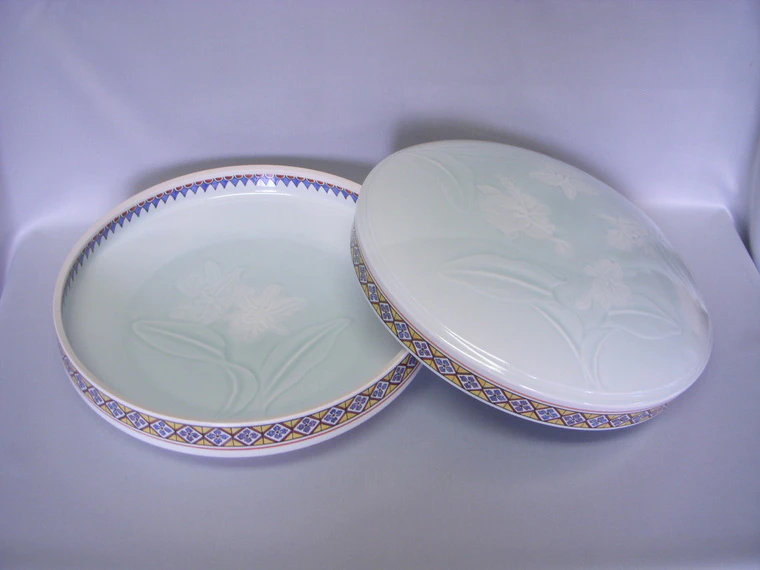White Porcelain Box with Pale Blue Glaze, Engraved Cattleya Design and Overglaze Enamel Decorations
H 16.0 cm,Year.2014The prices of the artworks on Gallery Japan are determined by the artists themselves and are published directly on the website.
- according to today's currency rate
- shipping fees not included
Sofu Matsuo
1947 -- Ceramics
-
Price Range
Under $14,000
Info
The prices of the artworks on Gallery Japan are determined by the artists themselves and are published directly on the website.
close - Awards at Japan Kōgei Assoc. Exhibitions : 6
About the Artwork
A covered food vessel. I engraved a modern cattleya design and applied the glaze twice to make the flower petals stand out. I decorated the sides of the cover and bowl with diamond shaped flower patterns in overglaze enamel.
Description
-
CategoryCeramics
-
DimensionsH 16.0 cm
-
Year presented2014
-
Paulownia BoxIncluded
-
InstructionsA vessel to serve food for festive occasions and guests.
Techniques Used
Overglaze enamel
Overglaze enamel decorations (iro-e, literally “colored pictures”) are achieved by applying designs to the surface of already glazed and fired porcelain. The decorations are painted over the glaze, and the piece is fired again at a low temperature of approximately 800℃. The pigments used in traditional overglaze decorations are known as wa enogu (“Japanese paints”) and offer a palette of colors such as red, blue, yellow, green, and purple. Overglaze enameling may also be done with Western pigments (yō enogu).
Pale blue porcelain
Pale-blue celadon porcelain (seihakuji, known as qingbai in Chinese) is made from porcelain clay derived from white stone. The porcelain is bisque fired and then covered with a glaze containing minute amounts of iron, which turns a blue tint when fired. Celadon originated in China. White porcelain made with a glaze that turns transparent when fired is called hakuji (“white porcelain”), while pieces made from porcelain clay containing iron and coated in a glaze that turns a bluish-green when fired is called seiji (“celadon” or “green ware”).

The prices of the artworks on Gallery Japan are determined by the artists themselves and are published directly on the website.

